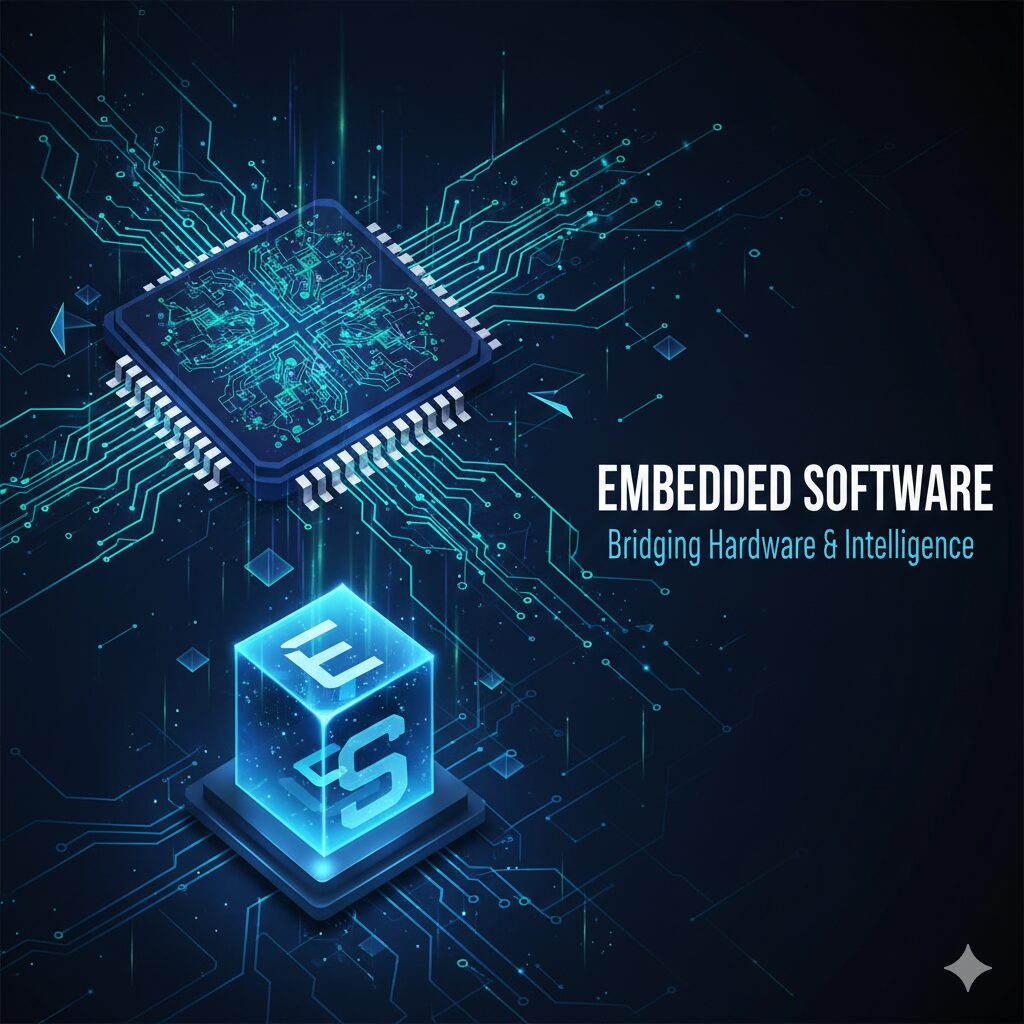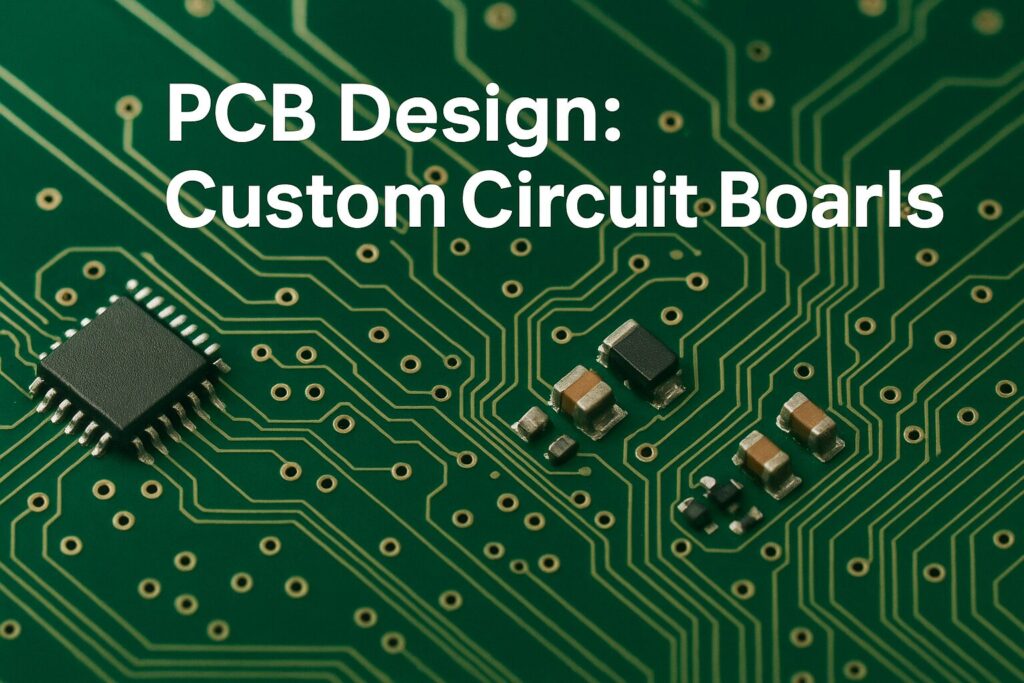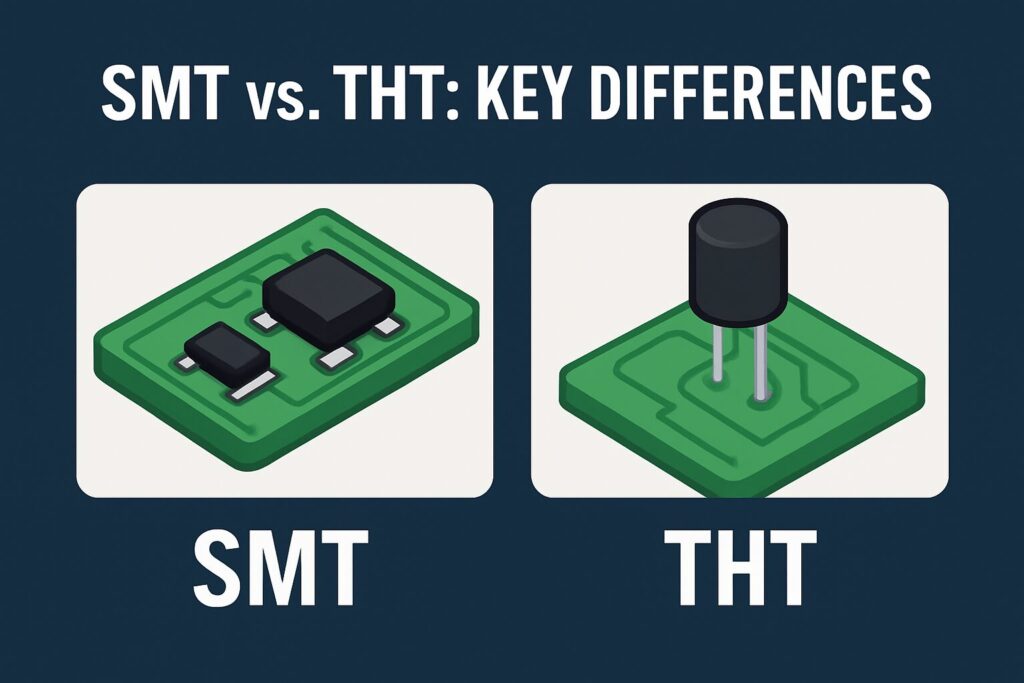Smart Devices in Everyday Life
In our daily lives, many devices are “smart” — often without us even realizing it. From washing machines and smartwatches to cars and industrial automation systems, countless devices rely on what is known as embedded software. This software allows them to operate autonomously, process data, and make decisions — often in real time and without human input.
What Is Embedded Software?
Embedded software is specialized code that runs on a specific device to control its functions.
Unlike general-purpose software for computers or smartphones, it is highly optimized for efficient hardware use and typically designed to perform a single dedicated task.
Example
The software inside an air conditioner remote reads temperature data, interprets user commands, and sends the corresponding signals to the air conditioning unit.
It must operate quickly and reliably to ensure comfort and energy efficiency.
Comparison: Embedded Software vs. General Software
| Feature | Embedded Software | Desktop / Mobile Software |
|---|---|---|
| Purpose | Controls and monitors a specific device | General-purpose use for various tasks |
| Real-time Response | Must often react immediately; timing is critical | Real-time response usually not essential |
| Hardware Dependency | Depends on microcontrollers, sensors, and actuators | Runs on standard PCs or smartphones |
| Resource Usage | Limited memory and CPU; highly optimized | Typically plenty of memory and processing power available |
| Updates | Complex; often performed via OTA (Over-The-Air) | Simple; quick updates via the internet |
| Security | Requires both physical and software-level protection | Primarily focuses on software security |
| Fault Tolerance | Errors can directly affect device behavior | Errors usually only impact user experience |
| Examples | AC remotes, smart sensors, industrial controllers | Office software, mobile games, websites |
IoT and OTA: The Strengths of Embedded Software
Today, embedded software not only makes devices function but also enables connectivity through the Internet of Things (IoT).
This allows devices to be monitored and controlled remotely. For example, a sensor in a home environment can be monitored online, send alerts, or automatically trigger actions — such as turning on lights or adjusting heating.
OTA Updates (Over-The-Air)
OTA updates enable wireless software updates for devices.
In the past, updates required manual intervention, but now they can be installed automatically over Wi-Fi or mobile networks.
This approach not only improves security but also allows continuous feature enhancements and bug fixes — without any physical access to the device.
Popular Development Boards
Choosing the right development board is essential when working with embedded software. Each platform offers unique advantages — some are better suited for simple prototypes, while others are designed for industrial-grade applications.
Arduino
- Processor: Atmega328P (8-bit), Atmega2560 (8-bit)
- Boards: Arduino Uno, Arduino Mega 2560, Arduino Nano
- Advantages: Ideal for beginners, easy to use, large community, extensive library support for sensors and actuators
- Applications: Hobby projects, prototypes, educational use — e.g., LED control, simple robots, or temperature data logging
STM32
- Processor: STM32F103C8T6 (ARM Cortex-M3), STM32F407VG (ARM Cortex-M4)
- Boards: Blue Pill, Nucleo-F446RE, Discovery-F407VG
- Advantages: Designed for industrial and high-performance applications; 32-bit ARM Cortex cores; rich peripheral interfaces for sensors and motor control
- Applications: Industrial automation, robotics, motor control, IoT devices
ESP32
- Processor: ESP32-D0WDQ6 (Tensilica Xtensa LX6 Dual-Core, 32-bit)
- Boards: ESP32 DevKit v1, ESP32-WROOM-32, ESP32-WROVER-B
- Advantages: Built-in Wi-Fi and Bluetooth; ideal for IoT applications; versatile dual-core processor
- Applications: Smart home systems, wireless data collection, sensor networks
Conclusion
Embedded software is the invisible hero of modern technology.
Through IoT, devices can communicate and interact intelligently. OTA updates make wireless upgrades possible, and development platforms like Arduino, STM32, and ESP32 make project implementation faster and more efficient.
Whether for hobby projects or industrial automation, embedded software forms the foundation of intelligent and efficient device control.
With the right embedded solutions, devices can operate efficiently, adapt to new requirements, and remain secure and reliable over time.
🔗 Get in touch with us :
Phone/WhatsApp: +41 76 212 8248
✉️ E-Mail: info@revantechnology.com
For detailed information about our services in electronics development & PCB design:
Revan Technology – Your partner for professional electronics and PCB development
Discover our recent work:
Revan Technology – Our Projects


